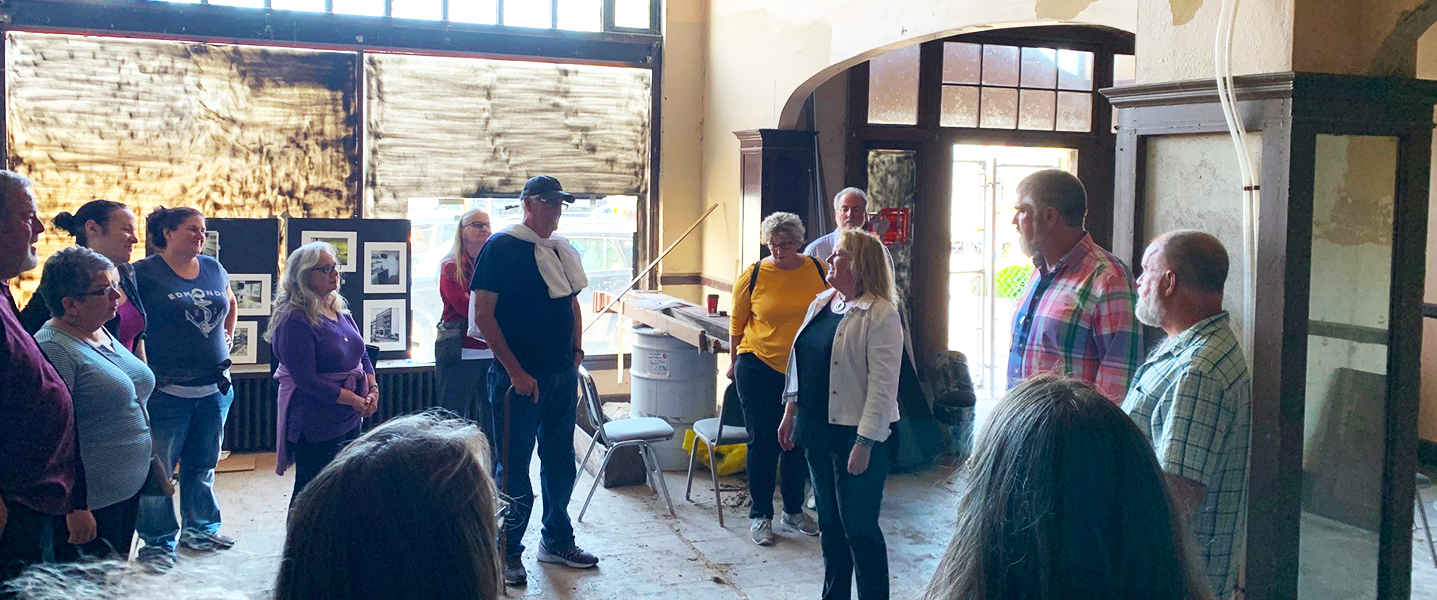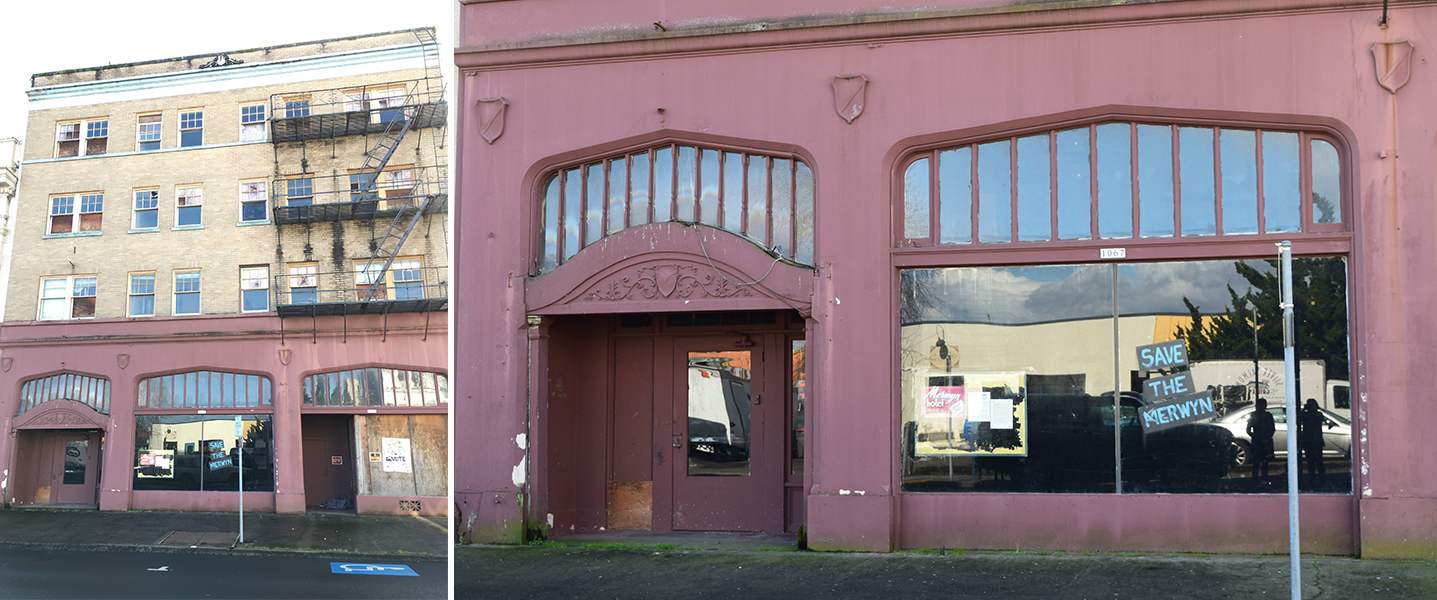Announcing the Science Discovery on Main Street Grant Recipients
Main Street America is thrilled to announce the 12 Science Discovery on Main Street grant program recipients.

Marion, Iowa © Tasha Sams
We work in collaboration with thousands of local partners and grassroots leaders across the nation who share our commitment to advancing shared prosperity, creating resilient economies, and improving quality of life.

Emporia, Kansas © Emporia Main Street
Made up of small towns, mid-sized communities, and urban commercial districts, the thousands of organizations, individuals, volunteers, and local leaders that make up Main Street America™ represent the broad diversity that makes this country so unique.

Chicago, Illinois © Main Street America
Looking for strategies and tools to support you in your work? Delve into the Main Street Resource Center and explore a wide range of resources including our extensive Knowledge Hub, professional development opportunities, field service offerings, advocacy support, and more!

Waterloo, Iowa © Main Street Waterloo
Your one-stop-shop for all the latest stories, news, events, and opportunities – including grants and funding programs – across Main Street.

Kendall Whittier — Tulsa, Oklahoma © Kendall Whittier Main Street
Join us in our work to advance shared prosperity, create strong economies, and improve quality of life in downtowns and neighborhood commercial districts.

How do those amazing Main Street rehabilitation projects happen? And what policies and public support make them happen? In the Behind the Ribbon Cutting series, we look at a project or businesses from concept to opening day to break down the partnerships and funding brought to bear and recognize how we can advocate for policies and resources for revitalization across the country.
Join us for a webinar and Q+A about this remarkable revitalization project on Thursday, November 18 at 3pm E.T. / 12pm P.T. Register here.
Situated in the northwest corner of Oregon, Astoria (pop. 9,836) is known as the first settlement west of the Rocky Mountains. Containing the highest concentration of historic resources in the state, the city’s historic preservation projects have utilized over $4M in federal historic tax credits in the past decade. Concurrently, an influx of new residents is shifting local development conditions, increasing demand for workforce housing. People experiencing homelessness in Clatsop County, where Astoria is located, outnumber all other counties in the state.
The city’s Main Street program, the Astoria Downtown Historic District Association (AHDHA), has a vision to see 100% of downtown buildings rehabbed. At the heart of downtown, the 94-year-old Merwyn building offered the key opportunity for the ADHDA to realize this vision. Once an 80-room hotel, the building sat vacant for 30 years. Its deteriorated physical fabric and blighted status created a situation in which redevelopment plans would not “pencil out,” leaving the building to languish, nearly demolished.

That was five years ago. Today, the building is fully rehabbed, with enhanced historic features, and contains 40 housing units, 36 of which are affordable, marketed specifically to district workers and individuals experiencing homelessness. Now, business owners and employees can walk to work, and chronically homeless individuals are now sheltered. Through partnerships, first-in project funding, and incentives stacked for success, the project serves as a case study for Main Streets nationwide looking to address the nebulous intersection of historic preservation, housing, and workforce development.
Leadership of the Merwyn project resulted from a strong partnership between ADHDA and the project developer, Innovative Housing, Inc. (IHI). When Sarah Lu Heath was enticed to the leadership role of ADHDA, she was told the Merwyn was an untouchable project. But when she approached IHI, a Portland-based low-income housing developer with decades of experience in similar projects, a new perspective opened the door. Julie Garver, IHI’s Housing Development Director, saw that while the historic building project could not appraise for rehabilitation for other uses, low-income housing would offer an appraisal that considered stacked incentives. “That’s what makes affordable housing so powerful for historic buildings: we get the appraisal no one else can,” notes Garver. IHI, looking to expand their footprint in rural areas, committed to the project in 2016 and set the redevelopment process in motion: the team completed an evaluation of the building’s deteriorating conditions, formulated a plan to maximize space for housing units, and began to determine funding sources.
For the Merwyn and other similarly complex projects, the expertise and tenacity needed in a developer cannot be underestimated, particularly in translating the current building conditions, potential outcomes, and available incentives into a workable pro forma. Even with IHI’s years of experience in both low-income housing and preservation, the Merwyn project posed significant challenges in construction and management.
.png)
While the availability of funding and incentives gave the Merwyn a chance at a second life, the key to success for the Merwyn lands squarely with IHI’s ability to stack those incentives together and navigate challenges throughout the process. Early funding from the Oregon Main Street Revitalization Grant offered a first step to encourage outreach to other funders and applications for state and federal incentives. Ultimately, the $7M project stacked several ten different funding sources to bring the project to life, explored more fully below.
Construction commenced in 2019, including environmental remediation funded through an Oregon Brownfields grant. Partnerships also flourished as ADHDA reached out to other organizations with aligned missions to ensure that the community both was in support and supported by the project. The Clatsop Community College, through its historic preservation program, provided a workshop on historic windows. ADHDA partnered with Consejo Hispano to expand the pool of applicants for available units.
As IHI introduced itself to Astoria, ADHDA facilitated connections and community input, including a design charette with potential residents. Concerns expressed by the Astorians were easy to achieve and indicative of long-years in substandard living conditions: bathtubs, insulation, no mold. The listening session offered IHI the chance to better understand the community and include simple fixes to ensure the Merwyn could feel like home.

As with most Main Street development projects, unforeseen issues emerged, including on the perennial hot topics of parking and first floor residential units. The project’s conditional use permit triggered a parking review process that challenged the project partners to find a clear pathway forward. The site did not support additional parking spots, but with Astoria’s walkable downtown, access to grocery stores, and public transportation, ASHDA and IHI successfully made the case to the city to put people over parking, allowing for a reduced requirement for the project. Ultimately, six spots were identified and dedicated, two of which saw immediate use.
This successful effort proves that in a walkable environment, dedicated parking requirements are superfluous as the transportation habits and housing priorities of city dwellers – particularly those seeking affordability – are weighed in the balance. According to Garver, “If you are a city that is serious about saving your historic buildings, get rid of parking minimums.” The Merwyn project also faced hurdles related to first floor zoning. With her experience in historic projects, Garver sees the Merwyn’s hurdles as endemic in development projects writ large: “A couple people told me IHI are the only ones that could do this – but that’s not the way it should be.” To enable more historic preservation projects and the creation of more housing units, cities need to re-evaluate zoning codes, making exceptions or changes to align with the priorities and needs of the community.
For Astoria, the strong partnership of ADHDA and IHI, along with the intentional process of supporting community needs, changed the landscape for potential future projects. Better understanding the pain points of the projects – including parking, first floor units, utilities upgrades, and alley activation – has made ADHDA more proficient in its role in supporting development. Ultimately, Heath sees this as a positive change for the future: “This project has helped people in the community see that other outcomes are possible.”
“First in money sets the tone for everything that comes after.” - Julie Garver
While the Merwyn’s success was dependent on the right people at the right time, it also hinged on key financing opportunities, including an initial financial commitment to leverage for further investment through a $100,000 Oregon Main Street Revitalization Grant (OMSRG). Only available to organizations participating in the Oregon Main Street network, the OMSRG, conceived by Oregon House Speaker Tina Kotek, was started with $2.5M state lottery bond funding in 2015. With a goal of spurring redevelopment in all areas of the state, 50% of funds are dedicated to rural projects outside the Portland area.
Beyond the Merwyn building, the OMSRG has amplified the ability of Main Street programs across the state to direct investment strategically into projects that enhance economic vitality for all. One of the OMSRG’s major impacts is the creation of downtown housing. In addition to the 40 new housing units at the Merwyn building, 63 other housing units have been put online in other projects awarded the grant. While the pandemic put a temporary pause on funding for this program, successful advocacy reinstated and increased the allocation, with $5M per year available for 2022 and 2023.

To take this ambitious and complex downtown project over the finish line, the initial $100,000 OMSRG investment needed to be stacked with several other funding sources. This included Oregon Local Innovation and Fast Track (LIFT) funds, an innovative program utilizing state General Obligation bonds, providing over $2.15M in funding to the project. Initially, the IHI team applied for 9% LIHTC but were denied due to steep competition and criteria. That’s where LIFT program is designed to be helpful. LIFT funds pair with 4% Low Income Housing Tax Credit (LIHTC) transactions. Specifically created to address a lack of 4% LIHTC transactions in the state, the LIFT program helped ensure an additional $2M in 4% LIHTC credits for the Merwyn, which will in turn retain the low-income requirements on the affordable units for 30 years. This paired design specifically addresses the unique needs of rural property redevelopment for low-income housing where rehabilitation costs may be higher and other funding may be hard to find. By utilizing both the OMSRG (Main Street specific funding) and LIFT (housing funding), the Merwyn project maximized state incentives that are designed to work with federal programs.
The other key incentive to the success of the project is the federal Historic Tax Credit (HTC). Offering a 20% tax credit on qualified rehabilitation expenses (QREs), the credit provides substantial funding with the goal of retaining the historic features of the property. For a project like the Merwyn, HTCs may increase expenses as they require compliance with the Secretary of the Interior’s Standards for Historic Preservation, but the resulting credits provide needed liquidity and appropriate treatment of historic assets.
A building included in a historic district is an immediate jumpstart for a project for a developer like Garver. She emphasizes, though, that in order to ensure appropriate compliance with preservation standards and successful completion, historic preservation expertise is essential. John Goodenburger, city historian and adjunct professor in the preservation program at Clatsop Community College, provided a guiding hand for the Merwyn project. Through Goodenburger’s involvement, the historic lobby, corridors, and individual hotel room doors were retained and incorporated into the rehabilitation design. Historic windows were creatively replicated to retain important façade features while meeting standards. Goodenburger worked with IHI to shepherd the project through the historic tax credit approval process through the State Historic Preservation Office and National Park Service, ensuring that the project could benefit from the 20% federal HTC.

The federal HTC has, for decades, provided essential funding for Main Street redevelopment projects. Many Main Streeters know that the forthcoming reconciliation package in Congress offers a key opportunity to improve the HTC to make it usable through six enhancement provisions. Those provisions include increasing the credit temporarily and eliminating the basis adjustment, inhibiting easier pairing of the Historic Tax Credit with Low-Income Housing Tax Credits. Projects like the Merwyn underscore the utility of these paired uses to bring more housing units to historic downtowns to serve district workers and low-income residents. Learn more about how you can support enhancements to the Historic Tax Credit here.
Building the proforma for a complex project, navigating zoning hurdles, and creatively responding to historic preservation standards, IHI brought the Merwyn close to the finish line, but final investments from local foundations filled the gap to bookend the project. With the onset of the pandemic, delays and increased costs threatened the project. Additionally, floor beams, rotted from the inside out, were discovered during construction that required significant intervention. Without the support of the Meyer Memorial Trust and Oregon Community Foundation, these unforeseen expenses could have derailed the Merwyn’s success. Just like first-in money, this gap support was essential to penciling out in the end.
The Merwyn project underscores both the difficulty of threading the needle for projects that combine historic preservation and affordable housing incentives and the possibilities that such projects represent for communities seeking to revitalize their downtowns. While there is no silver bullet approach, every individual factor, partnership, incentive, grant contributes to the outcome.
Main Streets across the country face similar on the ground conditions: underutilized historic structures with upper story space, the need to attract and retain a downtown workforce, and insufficient housing at affordable rents. These projects are laborious and intensive and require an all-hands-on-deck mentality and a developer with the expertise to see them through. But success of the Merwyn project is embodied in the residents who have a new home, walkable access to daily needs, and proximity to employment opportunities downtown. The process to reach this outcome and the strong partnership between Main Street and the developer is key example for commercial districts across the country to replicate, but the specific needs of each community, available state and local incentives, and leadership and partnership within a Main Street network are critical to the potential for more projects like the Merwyn nationwide.
Explore resources and programs related to this article, such as:
Special thanks to Julie Garver (Innovative Housing, Inc.), Sarah Lu Heath (Columbia-Pacific Economic Development District), Sheri Stuart (Oregon Main Street), and Jessamyn Grace West (Astoria Downtown Historic District Association) for their participation and contributions to this piece.